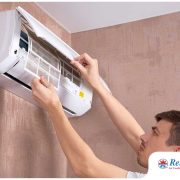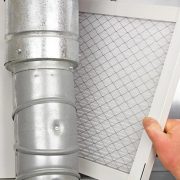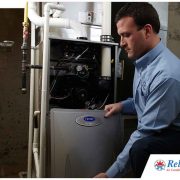Where Should Your Thermostat Be Installed?
Getting an accurate thermostat reading is crucial to ensuring consistent indoor comfort levels. That’s why proper thermostat placement should always be considered. Local heating and air conditioning repair contractor Reliable Air Conditioning & Heating explains this matters, and what can happen if proper thermostat placement isn’t observed.

Why Thermostat Placement Matters
The thermostat acts as the command center for your HVAC system, measuring and maintaining the temperature of your home. It has a sensor that detects the air temperature in the surrounding area and compares it to the temperature set on the screen. The HVAC system will then adjust accordingly based on the reading, and will continue to provide warm or cool air until the desired temperature is reached. Once this happens, the equipment will turn off on its own.
Incorrect thermostat placement can lead to inaccurate temperature readings, causing your system to run more frequently than necessary, thereby increasing your energy consumption and costs. It is, therefore, important to understand where to install your thermostat is essential for both energy efficiency and home comfort.
Locations To Avoid for Thermostat Installation
Heating and cooling experts advise against installing thermostats in these areas:
- Locations With Direct Sunlight or Near Exterior Walls. Installing your thermostat where it’s exposed to direct sunlight or on exterior walls can cause false readings, causing your system to overcool or overheat your home.
- Near Doors and Windows. Doors and windows can introduce drafts or let in outside air temperatures, affecting the thermostat’s readings and, consequently, the heating and cooling capacity of your system.
- Close to Kitchen and Bathrooms. The heat and steam from cooking and bathing can falsely signal your thermostat that your home is warmer than it actually is, leading to unnecessary cooling.
- Supply Vents and Heat Sources. Placing your thermostat near supply vents, lamps, or TVs can mislead the system into thinking the room is at a different temperature, causing inefficient operation.
- Hallways and Less-Used Areas. Although common, placing thermostats in hallways or areas with little activity can lead to a disparity in comfort levels, as these areas don’t represent the average temperature of frequently used spaces in your home.
Ideal Thermostat Placement for Optimal Performance
Meanwhile, the following are what’s considered the most ideal in terms of thermostat placement:
- Interior Walls. For accurate readings, position your thermostat on an interior wall, away from direct sunlight, drafts, doorways, windows, and any heat-producing appliances.
- Central Location. Ideally, install your thermostat in a central part of your home—a location that best represents the average temperature of your home’s living spaces.
- Recommended Height. Installing your thermostat at about 52-60 inches above the floor is advised to avoid skewed readings due to rising heat.
- Away From Obstructions. Your thermostat should have unobstructed air circulation, so avoid placing furniture in front of or beneath it, keeping it clear of curtains and shelves.
Get in Touch With Us!
Reliable Air Conditioning & Heating is your trusted source of the highest quality thermostats in North Hollywood, CA. In fact, we’ll help you get complete control of your indoor comfort with our Carrier smart thermostats, which are specially designed for increased energy-saving performance and accurate temperature and air quality measurements. Get started by calling (818) 487-0671 or filling out our contact form.











Leave a Reply
Want to join the discussion?Feel free to contribute!